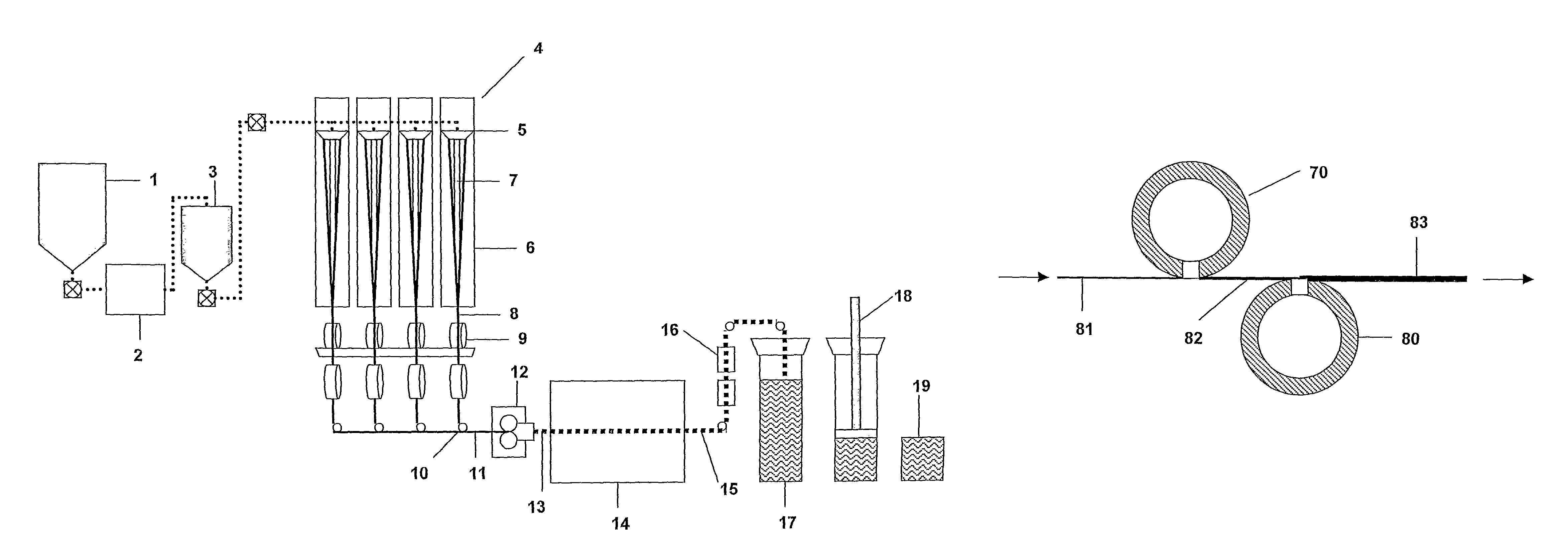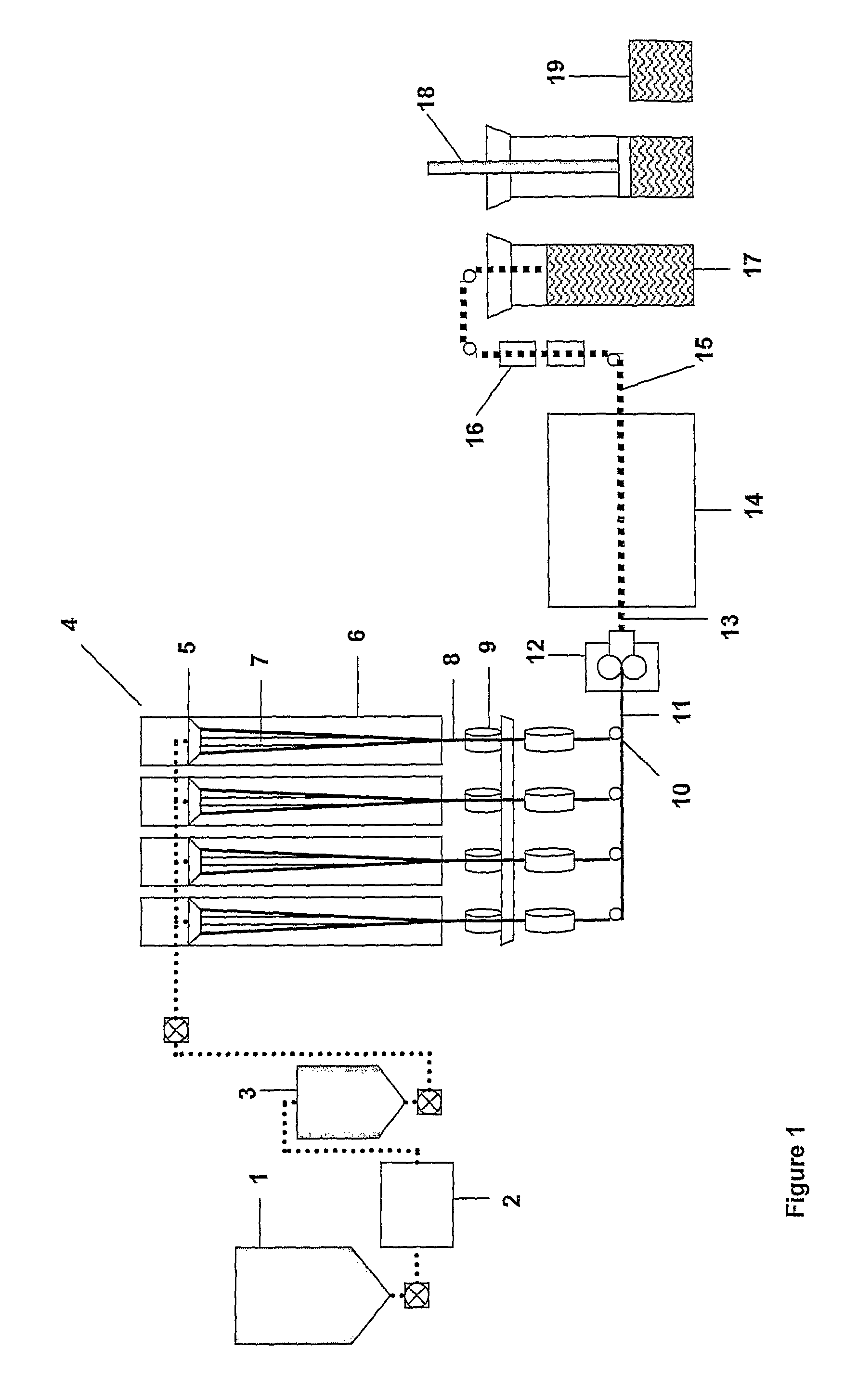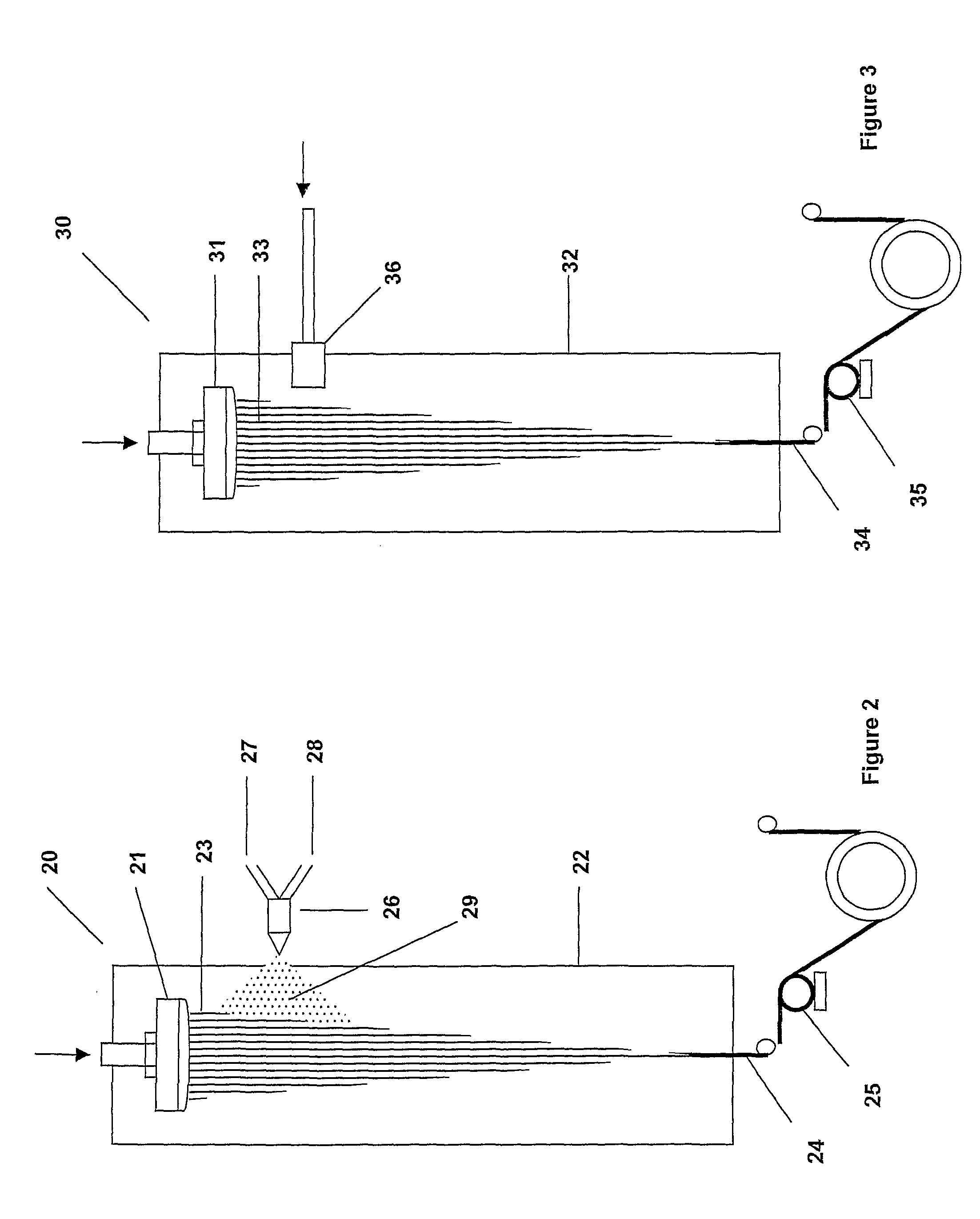Process for making filter tow
a filter rod and tow technology, applied in the field of crimping tows, can solve the problems of increasing the complexity of the making process affecting the quality of the filter rod, and the variability of the application of particles, so as to reduce the concentration of main stream smoke, reduce the loss of activity and/or reactivity, and reduce the effect of an acidic analy
- Summary
- Abstract
- Description
- Claims
- Application Information
AI Technical Summary
Benefits of technology
Problems solved by technology
Method used
Image
Examples
example 1
The Application of a Solution of DL-Malic Acid to the Towband Before Crimping
[0216]The application system consisted of a pressurised tank, (10 psi), containing a 50% aqueous solution of malic acid that supplied the inlet to a metering gear pump. The output from this pump was split into two separate streams with each outlet conduit feeding an applicator over which a tow comprising 3 denier filaments having a “Y-shaped” cross-section and 11,677 filaments in total (known as 3Y / 35,000) with an oil level of ˜0.3% ran prior to crimping. The conduits to each applicator were of equal length and internal bore to ensure equal flow to each applicator. The applicators consisted of a plenum chamber and a series of eleven or twelve 1 mm diameter holes through which the pumped 50% malic acid solution was uniformly applied to the uncrimped towband about 1 m before the crimper. The applicators were placed so that the positions of the holes relative to the towband were offset to ensure an uniform app...
example 2
The Application of a Solution of Potassium Carbonate to the Towband Before Crimping Using Glycerol as a Shed Suppressor
[0227]In order to reduce loss of potassium carbonate when producing filter rods it was beneficial to use glycerol as a liquid shed suppressor.
[0228]The application system consisted of a pressurised tank (10 psi) containing a 50% aqueous solution of potassium carbonate and 10% glycerol that supplied the inlet to a metering gear pump. The output from this pump was split into two streams with each outlet conduit feeding an applicator over which a 3Y / 35,000 low oil (˜0.3% oil) tow ran prior to crimping. It was found to be advantageous to reduce the oil level of the tow from typical values of 0.8 to 1.4% in order to enable better adhesion of the additive. The conduits to each applicator were of equal length and internal bore to ensure equal flow to each applicator. The applicators consisted of a plenum chamber and a series of eleven or twelve 1 mm diameter holes through ...
example 3
The Application of a Solution of Potassium Carbonate to the Towband Before Crimping Using Polyacrylic Acid as an Adhesive
[0235]In order to reduce loss of potassium carbonate when producing filter rods it was beneficial in this example to use polyacrylic acid as an adhesive shed suppressor. The application system consisted of a pressurised tank (10 psi) containing a 50% aqueous solution of potassium carbonate and 1% polyacrylic acid that supplied the inlet to a metering gear pump. The output from this pump was split into two streams with each outlet conduit feeding an applicator over which a 3Y / 35,000 low oil (˜0.3% oil) tow ran prior to crimping. The conduits to each applicator were of equal length and internal bore to ensure equal flow to each applicator. The applicators consisted of a plenum chamber and a series of eleven or twelve 1 mm diameter holes through which the pumped the solution was uniformly applied to the uncrimped tow band about 1 m before the crimper. The applicators...
PUM
 Login to View More
Login to View More Abstract
Description
Claims
Application Information
 Login to View More
Login to View More - R&D
- Intellectual Property
- Life Sciences
- Materials
- Tech Scout
- Unparalleled Data Quality
- Higher Quality Content
- 60% Fewer Hallucinations
Browse by: Latest US Patents, China's latest patents, Technical Efficacy Thesaurus, Application Domain, Technology Topic, Popular Technical Reports.
© 2025 PatSnap. All rights reserved.Legal|Privacy policy|Modern Slavery Act Transparency Statement|Sitemap|About US| Contact US: help@patsnap.com



